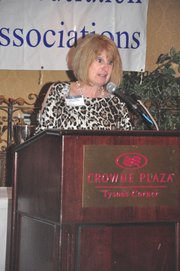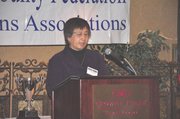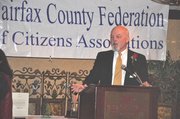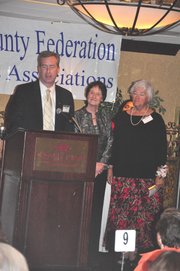R. Rogers
28 March 2012
Highlights: 27 March 2012 Reston Master Planning Task Force Meeting
Summary and Comment: The meeting focused on parks and recreation needs in the RCIG area. Based on the presentation by parks personnel and comments from the Task Force, much remains to be done. In particular, the connection of this subject to Phase II of the planning effort was emphasized.
Parks Recreation and Culture
Several people were involved in the presentation.
Anna Betley from the FC Parks Authority (FCPA) Staff, the main presenter.
Sandy Stallman, FCPA head of planning.
Larry Butler, RA Recreation Director
Leila Gordon, RCC
(The presentation was a coordinated effort of this group.)
Needs
An important 11 point table of needs is on the county website and should be reviewed. In addition, some useful maps show existing facilities, virtually none of which are in the TOD areas.
The “needs assessment” appeared to be based on FCPA parks standards. (Comment: Some of the Task Force sub-groups, particularly the RTC sub-com, critically questioned the applicability or the standards to the Reston TOD areas.)
Of note was a call for 54 acres of open space and small park facilities and approximately 60 acres of major play fields. (Comment: None of the sub-committees appear close to meeting the assessed needs and some task force groups have explicitly said that major fields should be outside the TOD areas.)
Major Facilities
The assessment called for one indoor aquatics facility and an indoor tennis facility. It also called for an indoor performance center.
One TF member called for a major recreation facility that might incorporate some of the above, perhaps at a Village Center. John Carter also raised the issue of a how a major university center might fit into the picture.
Peter Otteni of Boston Properties (BP) said that the 20 acre BP site adjacent to TC station might be considered for a major performance center, but pointedly commented that BP could not be expected to carry this load by itself. John Carter noted the Strathmore facility in MD cost $90 million. Leila Gordon said she was thinking of $50 million.
Connectivity
The presentation stressed the need for North-South connectivity into adjacent RA facilities and the need for east-west connectivity, particularly on the south side (the WOD trail already provides some on the North side). The presentation map contained a walkway along Sunrise Valley. Paul Thomas said a connection along the Dulles Toll road might be more appropriate (his Wiehle subcom had called for using existing parking and landscaped areas along the toll road for such a link).
Phase II
Bob Simon strongly criticized the presentation for focusing only on the RCIG and not the relationship to the surrounding PRC area. He called the presentation an“academic analysis.” Comment: Other comments focused on potential Phase II issue such as the relationship of needs to Lake Fairfax Park and the role of RA (FCPA said again it sees obstacles to better park connectivity to Reston) and RA implied that underutilized RA aquatic facilities could play a role). It is difficult to see how the full needs assessment could be fulfilled without reference to the PRC and even adjacent areas to Reston.
Next Steps and Implementation
The presenter said that the next steps would involve finalizing the list of needs, refining recommendations and the submission of a “memorandum”. Some TF members noted the linkage of park issues to the subject of implementation. The issue of governance was not discussed although Leila Gordon said she presumed the RCIG area would become part of RA. (Comment: There seemed to be a significant disconnect between the needs presentation and what has been developed by the sub-committees. The presenter said the sub-com reports had been taken into account, but this was not immediately apparent. Whether this can be bridged by plan language remains to be seen.)
Cryptic Comments by the Presenters
- Anna noted that Reston Town Center North offers a “particular opportunity” because so much of it is county land.
- Larry Butler commented that future developments might depend on “where they draw the stable neighborhood lines” in Phase II.
Next TF Meetings
Heidi Merkel said the next TF meeting on 17 April would focus on the real estate market trends and an update on revised George Mason figures.
A meeting on 24 April will involve a presentation on the scope and metrics of the transportation study (not the results) and may include a public safety presentation.








